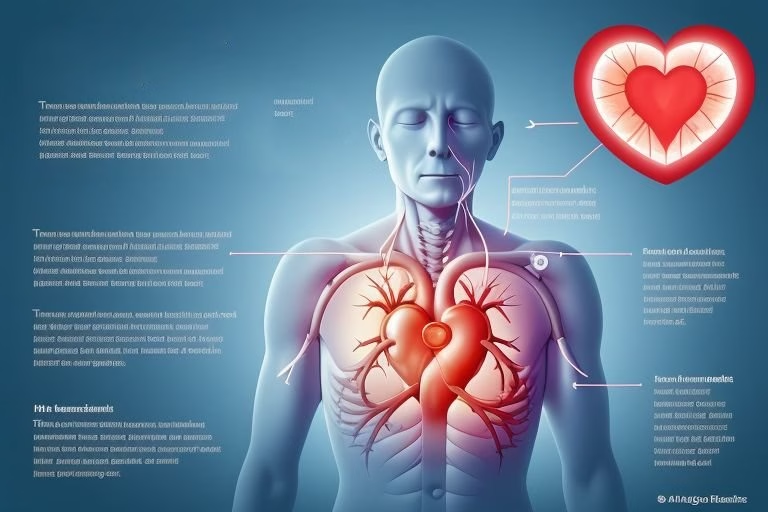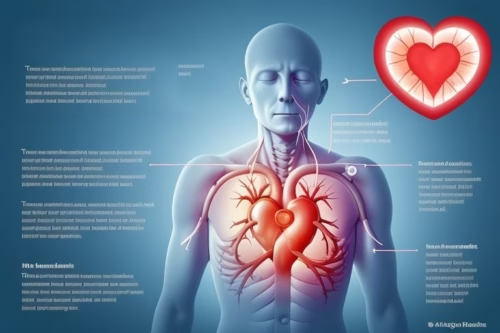
Cardiac arrest death is a serious issue that affects millions of families worldwide, yet with the right knowledge and preventive actions, many lives can be saved. In this comprehensive guide, we will explore everything you need to know about cardiac arrest death – from understanding what it is, to recognizing the early warning signs, and learning how to take proactive steps to ensure better heart health. Whether you’re a concerned family member, a health enthusiast, or someone looking to improve their lifestyle, this article is designed to be informative, friendly and most of all, practical.
What is Cardiac Arrest Death?
Cardiac arrest death occurs when the heart suddenly stops beating, leading to the cessation of blood flow to the brain and other vital organs. This life-threatening condition is not the same as a heart attack, although the two are often confused. A heart attack happens when blood flow to a part of the heart muscle is blocked, whereas cardiac arrest is an electrical malfunction that disrupts the heart’s rhythm. This distinction is crucial becuz proper and swift intervention can mean the difference between life and death.
For more detailed medical explanations on heart conditions, you can visit the American Heart Association and Mayo Clinic which provide extensive insights into these conditions.

Causes and Risk Factors
There are several causes and risk factors that can lead to cardiac arrest death. While some risk factors such as genetics and age are not modifiable, many lifestyle factors can be improved to lower your risk. Some common causes include:
- Coronary artery disease: This condition narrows the arteries due to plaque buildup, increasing the risk of a sudden cardiac event.
- Electrical abnormalities: Disorders like arrhythmias can disrupt the heart’s normal rhythm.
- Heart failure: When the heart cannot pump blood efficiently, the risk of cardiac arrest increases.
- Lifestyle factors: Poor diet, lack of physical activity, smoking, and excessive alcohol consumption can all contribute to poor heart health.
It’s important to note that sometimes even people with no prior history of heart disease can experience a cardiac arrest. Therefore, adopting a proactive approach towards heart health is neccessary. For further reading on risk factors and prevention, check out the Cleveland Clinic’s Heart Health Resources.
Early Warning Signs and Symptoms
Recognizing the early warning signs of a potential cardiac arrest death is key to initiating timely help. While cardiac arrest can sometimes occur without any warning signs, there are several symptoms that can precede an event:
- Sudden collapse or loss of consciousness: If someone faints unexpectedly, it could be a sign of a heart problem.
- Shortness of breath: Unexplained difficulty in breathing can indicate that the heart is struggling to pump blood efficiently.
- Chest discomfort: This might not be as severe as a heart attack, but any unusual chest pain should be evaluated by a healthcare professional.
- Fatigue and weakness: Extreme tiredness, even after adequate rest, can sometimes be an early sign.
Many of these symptoms might be misinterpreted as less serious issues, so it is important to err on the side of caution. If you or someone around you experiences any of these warning signs, seek medical help immediately. Learn more about these symptoms on reputable sites like NHS Choices.
Preventive Measures to Reduce Cardiac Arrest Death
Preventing cardiac arrest death starts with an honest evaluation of your current lifestyle and making improvements where possible. Here are 7 powerful ways to help reduce your risk and boost your heart health:
1. Maintain a Healthy Diet
Eating a balanced diet is fundamental for a strong heart. Focus on a diet rich in fruits, vegetables, whole grains, lean proteins, and healthy fats. Foods high in omega-3 fatty acids, such as salmon, walnuts, and flaxseeds, can be especially beneficial. Try to limit the intake of processed foods, salt, and sugars, as these can lead to high blood pressure and other heart-related issues.
Incorporate superfoods into your meals, such as blueberries, spinach, and avocados which are packed with antioxidants and vitamins that protect the heart. For more diet tips and healthy recipes, visit Healthline’s nutrition section.
2. Regular Physical Activity
Exercise is one of the most effective ways to reduce the risk of cardiac arrest death. Regular physical activity helps improve blood circulation, lower blood pressure, and maintain a healthy weight. Aim for at least 150 minutes of moderate aerobic exercise each week. Activities like brisk walking, cycling, swimming, and even dancing can make a significant impact.
It’s important to choose activities that you enjoy, so that you’re more likely to stick with them long-term. If you’re unsure where to start, consider checking out exercise guidelines on WebMD’s fitness page.
3. Quit Smoking and Limit Alcohol
Smoking is one of the biggest risk factors for heart diseases, including cardiac arrest death. The chemicals in cigarettes can damage your blood vessels and lead to the buildup of plaque in your arteries. Quitting smoking can significantly reduce your risk, and there are many resources available to help you quit.
Similarly, excessive alcohol consumption can negatively impact heart health. While moderate drinking might have some benefits, it’s important to stay within recommended limits. If you need support with quitting smoking or managing alcohol intake, organizations like the Centers for Disease Control and Prevention (CDC) offer useful resources.
4. Regular Health Screenings
Routine check-ups and health screenings are essential for early detection of conditions that could lead to cardiac arrest death. Regularly monitoring your blood pressure, cholesterol levels, and blood sugar can help you catch any abnormalities early on. This is particularly important if you have a family history of heart disease or other risk factors.
A simple visit to your healthcare provider can provide valuable insights into your overall health. For more information on the importance of regular health screenings, check out the National Heart, Lung, and Blood Institute.
5. Manage Stress Effectively
Chronic stress is often overlooked but can have a significant impact on your heart health. Prolonged stress can lead to high blood pressure and other heart issues. Finding ways to manage stress, whether through meditation, exercise, hobbies, or spending time with loved ones, is crucial.
Techniques such as deep breathing, yoga, and even spending time in nature can help reduce stress levels. There are plenty of apps and online resources that offer guided meditation and stress management tips. For more ideas on stress reduction, visit Mindful.org.
6. Understand Your Family History
Knowing your family history can provide important clues about your risk for cardiac arrest death. If your family has a history of heart disease, it is even more critical to maintain a healthy lifestyle and keep up with regular screenings. Discussing your family medical history with your doctor can help tailor a prevention plan that is right for you.
Understanding genetic predispositions allows you to take preventative actions sooner rather than later. For further reading on the role of genetics in heart disease, visit Genetics Home Reference.
7. Learn and Practice CPR
One of the most lifesaving skills you can learn is CPR (cardiopulmonary resuscitation). Knowing how to perform CPR can be the difference between life and death in an emergency situation involving cardiac arrest death. Community centers, hospitals, and organizations such as the American Red Cross offer classes to teach you these vital skills.
By learning CPR, you not only increase your own safety but also empower yourself to help others in a crisis. Regular refreshers and practical sessions can ensure that your skills remain sharp and effective.
The Role of Automated External Defibrillators (AEDs)
In addition to CPR, the use of Automated External Defibrillators (AEDs) is a critical part of the chain of survival for those experiencing cardiac arrest death. AEDs are portable devices that analyze the heart’s rhythm and can deliver an electric shock to help re-establish a normal rhythm.
Many public places now have AEDs available, and it’s important to be aware of their locations. Training in the use of AEDs is often combined with CPR classes, making it easier for bystanders to provide immediate help in emergencies. For more on how AEDs work and where to find them, you can read about them on the American Heart Association’s website.
How to Act in an Emergency
Even with the best prevention measures, emergencies can still occur. Knowing exactly what to do during a cardiac arrest death situation is essential. Here are some step-by-step guidelines:
- Call for Help: Immediately dial your local emergency number (such as 911) if someone shows signs of cardiac arrest.
- Start CPR: Begin CPR right away. If you’re not trained, follow the dispatcher’s instructions until help arrives.
- Use an AED if Available: If there is an AED nearby, retrieve it and follow its voice prompts carefully.
- Stay Calm and Focused: Keeping a clear head is critical. Remember, every second counts during a cardiac emergency.
Many community programs and local hospitals offer emergency response training, which can give you the confidence and skills needed to act effectively. For additional emergency preparedness tips, visit Ready.gov.
Real Life Success Stories
There are countless stories of everyday heroes who have made a lifesaving difference during a cardiac arrest death event. These success stories not only inspire hope but also reinforce the importance of being prepared. For instance, one story involved a bystander who had recently completed a CPR course and was able to save a stranger’s life by quickly administering CPR and using an AED. These experiences highlight the power of knowledge and community readiness.
One such case was reported in a local newspaper where a quick-thinking citizen revived an individual who had collapsed unexpectedly. While it may seem overwhelming to think about, these events serve as a powerful reminder that with the right training and mindset, anyone can make a difference. Read more about inspiring recovery stories at BBC News Health.
Advances in Technology and Heart Health
The field of heart health is constantly evolving, and technology is playing an increasingly important role in preventing cardiac arrest death. From wearable devices that monitor heart rhythm to mobile apps that can alert you to potential heart issues, innovations are making it easier than ever to keep tabs on your heart.
Wearable Devices and Mobile Health Apps
Modern wearable devices such as smartwatches can track heart rate, monitor physical activity, and even detect abnormal heart rhythms. These devices are becoming an integral part of preventive healthcare, as they provide real-time data that can alert users to potential problems before they become serious. Many apps also offer personalized health tips and reminders to keep you on track with your fitness goals.
For a deeper look into how technology is revolutionizing heart health, check out articles on TechCrunch Health and Wired’s health section.
Telemedicine and Remote Monitoring
Telemedicine has made it easier for patients to consult with their doctors without having to leave their homes. This accessibility is particularly beneficial for those at higher risk of cardiac arrest death, as it allows for continuous monitoring and timely adjustments to treatment plans. Remote monitoring devices can send crucial data to healthcare providers, who can then offer immediate advice if there are any signs of trouble.
The rise of telemedicine not only improves accessibility but also helps reduce the time between symptom detection and medical intervention. For more on the benefits of telemedicine, visit HealthIT.gov.
Genetic Testing and Personalized Medicine
Advances in genetic testing have opened the door to personalized medicine. By understanding your genetic predisposition to heart conditions, healthcare providers can offer tailored advice and preventive measures. This personalized approach ensures that interventions are more effective and can significantly lower the risk of cardiac arrest death.
Genetic insights are becoming an increasingly valuable tool in modern healthcare, providing a more nuanced understanding of individual risk factors. For more insights on personalized medicine, visit NIH Genetics.
Lifestyle Changes That Make a Difference
Small, everyday choices can have a huge impact on your heart health. While it may be challenging to overhaul your entire lifestyle overnight, incorporating a few changes gradually can significantly reduce your risk of cardiac arrest death. Here are some practical tips to help you get started:
- Stay Active Throughout the Day: Even if you have a sedentary job, try to take short walks or do some light stretching every hour.
- Choose Whole Foods: Replace processed snacks with fruits, nuts, and other nutrient-rich foods.
- Stay Hydrated: Drinking enough water is essential for overall health and helps maintain a healthy blood flow.
- Get Enough Sleep: Quality sleep is crucial for heart health. Aim for 7-9 hours of sleep per night.
- Engage in Relaxing Activities: Whether it’s reading, listening to music, or spending time with friends, find activities that help you unwind and reduce stress.
Remember, every small step counts. Changing your lifestyle can be a gradual process, but each positive change brings you closer to a healthier heart. For more lifestyle tips and wellness advice, check out Verywell Health.
The Importance of Community and Support
No one should have to face the threat of cardiac arrest death alone. Having a strong support network can make a big difference in managing your risk and recovering from heart-related events. Friends, family, and community groups can provide emotional support, share useful information, and even help you stay accountable in your health journey.
Joining a local fitness group or a heart health support group can provide not only motivation but also valuable insights from others who have faced similar challenges. In addition, community events and health fairs often offer free screenings and educational sessions that can keep you informed about the latest in heart health. For community support and local health events, see resources on Eventbrite Health or your local hospital’s website.
Overcoming the Fear of Cardiac Arrest Death
It’s natural to feel anxious or fearful when discussing topics like cardiac arrest death, but knowledge is power. Understanding the causes, early warning signs, and preventive measures can help dispel fear and empower you to take control of your heart health. Recognize that while the risk is real, there are many steps you can take to protect yourself and your loved ones.
Rather than letting fear dominate, use it as a motivator to learn more, make better lifestyle choices, and be prepared in case of an emergency. Remember, even small actions can save lives. For further motivational stories and tips on managing health anxieties, you might enjoy reading articles on Psychology Today.
Practical Steps to Create a Heart-Healthy Environment
Creating an environment that supports a healthy heart is a proactive way to reduce the risk of cardiac arrest death. Here are some practical ideas:
- Home Environment: Stock your kitchen with heart-healthy foods and eliminate junk food. Keep a list of emergency numbers handy, and consider taking a CPR course as a family activity.
- Workplace: Encourage healthy practices at work. This could include promoting breaks for walking, offering healthy snacks, and even organizing group exercise sessions.
- Community Initiatives: Get involved in local community programs that promote fitness and healthy living. Volunteer for heart health awareness events or join local initiatives that support cardiovascular health research.
Creating a supportive environment not only improves your own health but can also have a positive ripple effect on those around you. For more ideas on fostering a heart-healthy environment, you can check out Prevention Magazine.
Staying Informed and Up-to-Date
The field of heart health is continuously evolving, and staying informed is critical to prevent cardiac arrest death. New research, medical breakthroughs, and updated guidelines are released regularly by top health organizations. Make it a habit to follow reputable sources and subscribe to newsletters from organizations like the American Heart Association and Mayo Clinic.
Reading current research and expert opinions can help you understand the latest trends and recommendations in heart health. This ongoing learning process is an essential part of taking control of your health and ensuring that you are prepared for any situation.
Embracing a Positive Mindset
Beyond all the practical steps and medical guidelines, embracing a positive mindset is vital in the fight against cardiac arrest death. Stress, negativity, and constant worry can take a toll on your heart. Instead, focus on cultivating optimism, gratitude, and a proactive attitude towards life.
Engaging in hobbies, spending quality time with loved ones, and celebrating small victories can help maintain a positive outlook. A happy mind often translates to a healthier heart. For additional tips on maintaining a positive mindset and mental well-being, check out Positive Psychology.
In Conclusion
Cardiac arrest death is a devastating event, but it is not inevitable. With a comprehensive approach that includes a healthy diet, regular physical activity, stress management, and proper emergency preparedness like learning CPR and understanding the use of AEDs, you can significantly reduce your risk. Taking proactive steps to improve your overall heart health not only benefits you but also has the potential to save lives in your community.
While there is no single solution to completely eliminating the risk, combining various lifestyle changes and medical interventions creates a strong defense against the threat of cardiac arrest death. Stay informed, be proactive, and always be prepared to act in an emergency.
Remember, every small change counts, and by investing in your heart health today, you’re paving the way for a longer, happier, and more fulfilling life. For more inspiring articles and practical advice on maintaining a healthy lifestyle, visit reputable sources such as WebMD and Cleveland Clinic.
Thank you for taking the time to read this guide. We hope these 7 incredible ways empower you to make better decisions for your health. Your heart is worth every effort, so start making positive changes today – and share this article with family and friends to help spread awareness about preventing cardiac arrest death.
Stay heart smart, and keep thriving for a healthier tomorrow!



